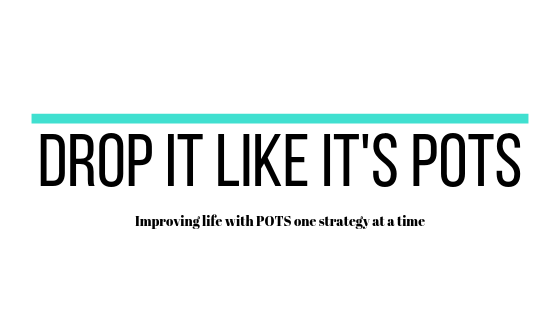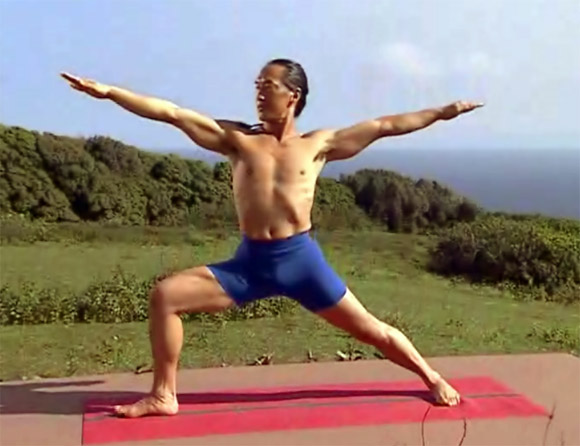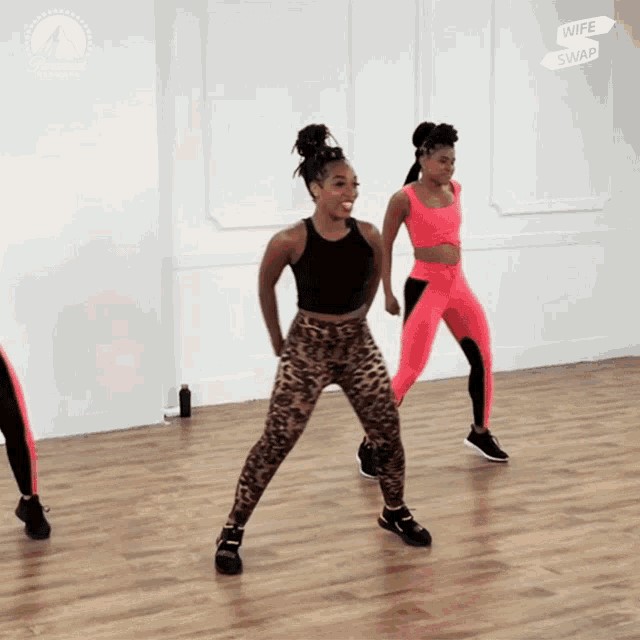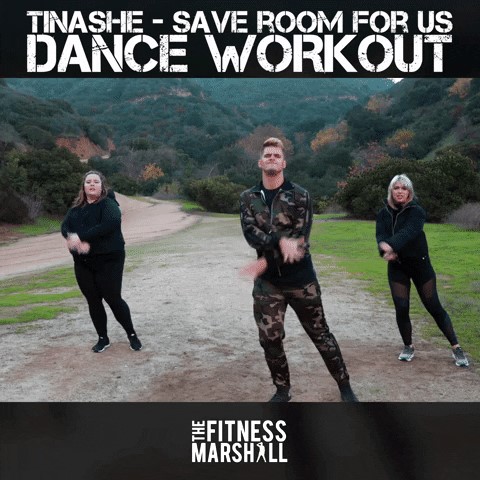Prior to POTS, I was an avid runner and loved it. I ran cross-country and track throughout high school and college. Post-college, I continued to train and would do a race every now and then. Right before POTS hit me like a ton of bricks, I started thinking about racing again and was trying to get in 1-mile road race condition. I didn’t try running again until a few years later during the Modified Levine Protocol. It felt horrible, so I stopped and figured my running days were over.
Last year (2021), I had the itch to try to run again. This is cheesy, but it struck me after watching the Olympics. It reminded me of the joy that running used to bring me. So, I thought, why not give it a whirl again? It may not work out long-term, and that is okay. I made peace with the fact that I was done running a long time ago, so this is all just a bonus for me.
Note- For those not familiar with my story, when I was first diagnosed, I could tolerate 3 minutes of extremely light exercise. It has taken nearly 4 years of gradual building, recovery, treatment, etc. to get to this point. This is a big effing deal. That being said, this is my unique journey, take it for what it is.
The Process
First, I built a foundation by working up to 3 miles of walking every day for several months. That was smart. Then, I started running 10-15 minutes at a time and threw in some fast intervals. That was NOT smart. If you’re a healthy high-schooler, sure, that may work. But, I’ve come to understand that my mid-thirties POTS body requires an extremely gradual approach with tons of TLC.
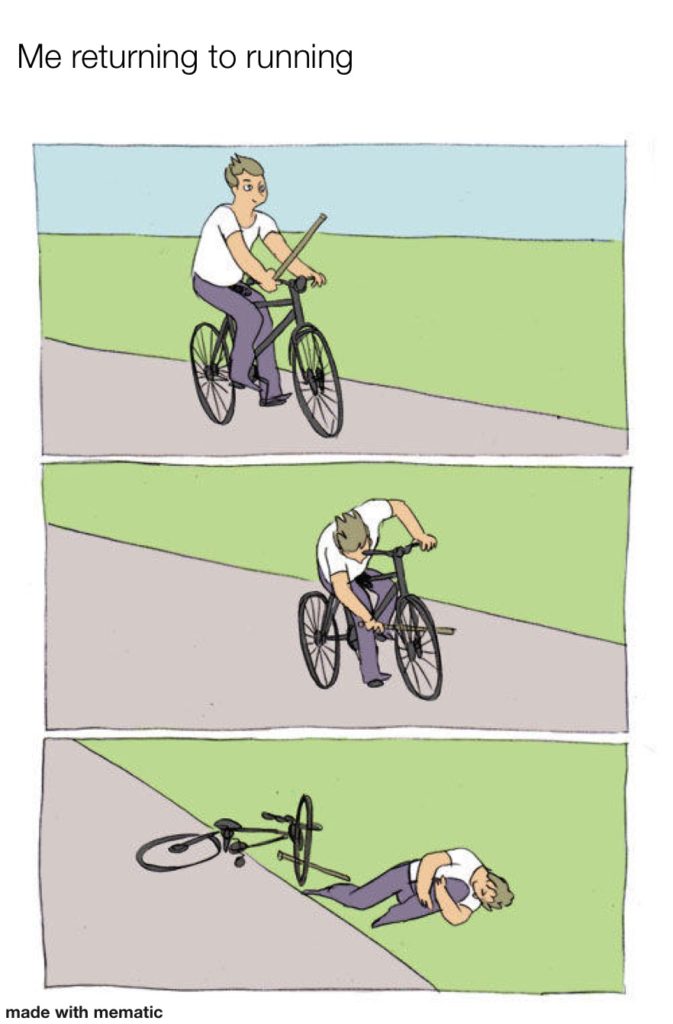
Eventually, I worked with a PT that helped me get on a better path. You can read about my experience with that here. I currently do PT exercises three times per week (just dropped down from daily) using a combo of what I learned at the PT recently, things I have taken away from previous PT stints, new things I learn from podcasts, articles, books, etc., and sometimes things that I make up. I also strategically lift weights three times per week and do plyometrics once per week. Collectively, this is all very “extra”, but through these last several months of trial and error, I have learned that it is what my body needs to get it able to run healthily.
As for the actual running, I used a walk/jog approach for a while, starting with three sets of one minute of running. I increased the time when it felt right. I eventually switched to two longer sets of walk/run, and then to just running when I was around 12 minutes total. After Covid (about 6 weeks off), I started with 3 minutes of running and just added one minute each session. However, I would occasionally plateau at certain levels for a couple sessions when it felt prudent.
Where I’m at now

As I mentioned, it’s been a long process rife with minor injuries and illnesses (you can read about my experience with Covid here). I have been working on this “running project” since September 2021, and as of now (May 2022) I can successfully run 20 minutes three times per week.
I recently started incorporating speed work. On one run each week I started doing a couple “striders”, which are repeats of roughly 100m below a sprint pace. Currently, I am doing low volume interval workouts like 3×1 minute with 1 minute rest between followed by 2×30 second sprints.
I still walk every day, but I walk less on the days that I run.
I am thrilled by where I am at. Sure, it’s taken a long time with a lot of ups and downs, but if you would have told me back in 2017/2018 that I was running again, I wouldn’t have believed you.
Future Plans
I plan to continue to increase the time spent running, how many days I run, and the volume of the speed workouts (as my body permits). It would be awesome to race middle distances again some day, so I’d like to get to the point of tolerating the workload necessary for that. However, I don’t know if that is a realistic goal. I’ll just keep building and see if I get there.
Words of Wisdom
- You must be strong to run. I recommend lifting weights and having a repertoire of PT accessory exercises that you mix with it.
- See a PT if you’re having trouble.
- Add in plyometrics when you’re ready. It will train your tissues be able to handle the loads of running more. Start small (one set, 6-10 reps, simple exercises, once per week). Plyometrics are a power exercise, so they require full rest to get the most out of them. Insanity-style HIIT workouts and bootcamp workouts are NOT going to achieve the same thing.
- Start with ridiculously low volume and advance ridiculously slowly.
- Use massage tools like a foam roller or Yoga Tune-Up ball.
- Strengthen and mobilize your feet. I do this by wearing minimalist/barefoot shoes for walking and daily life, Yoga Tune-Up ball, Happy Feet socks in the evening, and some exercises I’ve picked up from various sources.
- Be mobile in every day life, not just in running. It’s jarring on the body to go from a sedentary lifestyle to running.
- Incorporate an extensive warm-up including drills to improve form.
If you have any questions or want more details about these points, feel free to comment or send me an e-mail.
How Running Has Impacted my POTS
This is the most exciting part of running again- my POTS improve the more I run!
My energy levels and pre-syncope have improved since I began running. I am super psyched about it. I also saw a correlation between doing longer walks/faster walks and how I felt. So, do not be dismayed if you cannot run. There’s a lot of benefit you can reap before getting to the point of running.
If you have been following this blog for a while you may remember that I was pretty indifferent on long cardio and interval training after doing the Modified Levine Protocol. I thought the protocol was helpful for me, but felt like the volume was too high and it burned me out. That was true for where I was at that point. However, now, I can handle more and am continuing to reap the benefits of doing increasing loads/volume/intensity as tolerated.
A few years ago, I read an article about how jump training improves POTS due to its effect on the muscular pump to return blood back upwards from the lower legs. Unfortunately, I cannot find that article anymore to link it. If you find it, please let me know! This study has been on my mind as I experience an improvement in POTS from running and plyometrics. Obviously plyometrics is jump training, but running also checks this box. Running is essentially a series of jumps. If I find that I am no longer able to run, I will definitely find ways to incorporate jump training to continue reaping these benefits. In addition to plyometrics, I would try jump roping. Jump roping produces less impact than running, but still has that rebounding off the ground effect that is beneficial.
To read more about the benefits of exercise in general, you can check out my article on Exercise and POTS.
Do you run with POTS or a different chronic illness? How has it impacted your health and life?
Disclaimer: I am not a medical professional. Statements on this site are not meant to be taken as medical advice. These statements reflect my personal experiences having mild-ish post-viral POTS and ME. Due to the wide spectrum of these diseases, comorbidities, and everyone being different, your experiences may be very different than mine.
Note: If you post a comment, this site does NOT have a feature to notify you of responses to your comment. I have not found a good solution for that yet. However, I usually respond to every comment in a timely manner, so be sure to check back.
